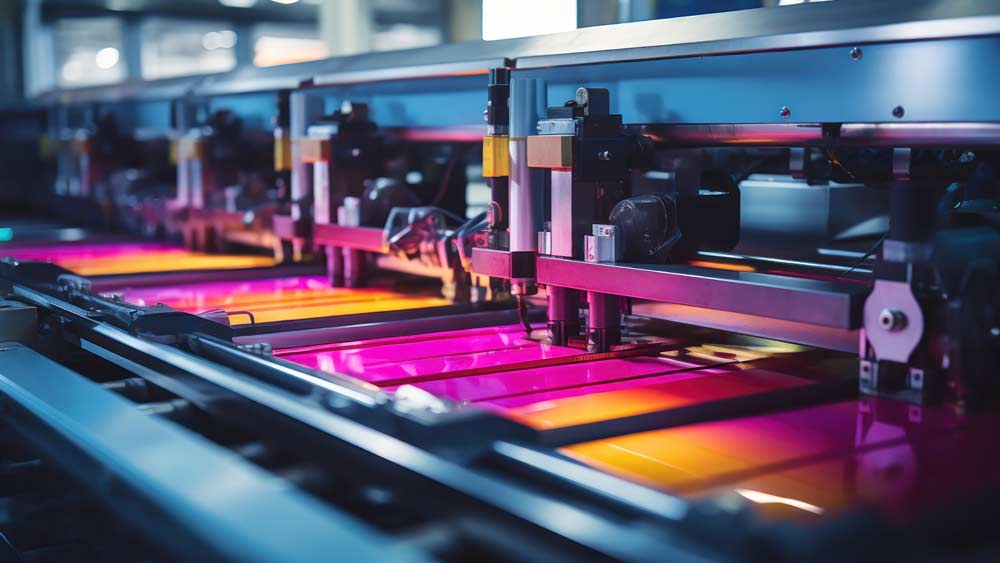
11 hours ago
How To Create Stunning Designs With Lenticular Printing?
READ TIME: 4 MIN.
Ever wondered how to create designs that appear to move or shift right before your eyes?
Lenticular printing is a highly advanced technique that gives life to your artwork with brilliant depth, animation, and 3D effects. Visualize an image that changes with the angle or one that seems to walk through magic with lenticular lenses.
But how does such a mind-boggling visual come into being?
It may sound like a complicated process, but anyone can learn the art of lenticular design with good techniques and tools. Keep reading to find out how you can, step by step, create multidimensional, mesmerizing art through lenticular printing.
1. Understand Lenticular Printing Basics
Before delving into lenticular printing, you must know what it's all about. Lenticular printing is done through a line of lenses that generate images with either depth or motion and are visually stimulating.
You can realize that this technique can create multiple visual effects. For example, 3D images pop out from a surface, tell a story through animations, or shift and change images with your movement rate. This magic interaction beneath the scenes of art and technology can give your designs a different twist through a creative license that mere standard printing just cannot pull off.
As you start to experiment with this medium, consider the kind of effects you might want to achieve and how they will enhance your artwork.
Take the time to understand these basics, as it forms a good grounding for any design process later on with a lenticular printing.

Source: Freepik.com
2. Design Your Images
Design your images by selecting an interesting idea that best describes your vision and intent. Decide what kind of effect you want to show: either a marvelous 3D effect, cool flip, or smooth morph effect.
Once that is decided, you can proceed with the design. If you decide on the flip or morph effect, creating images with layers is necessary.
Create several graphics that merge well together, allowing smooth transitions from one to another. Be very careful with the alignment of these pictures and their interaction, as these are two of the most vital keys to success in the end product.
Also, consider the angles of view. The success of your design is very much dependent on the way it looks from different points of view.
Remember that you want to visualize your audience and adjust your designs based on that; keeping these angles in mind will enhance the overall impact and clarity of the artwork.
3. Test Your Design
Once you have designed your work, you might want to test it before printing. First, print a small test of your work. This test print lets you see the lenticular effects in action so you can decide if the images transition smoothly enough and make the effect you want.
When you proof your piece, pay close attention to the alignment; even small alignment errors can be very distracting. Check for color accuracy. Colors shift during printing, so hold it up against your digital files.
Finally, step back and view the design effect in its entirety. Does it capture the viewer's attention? Does it draw out the intended message or feeling?
You can refine your artwork by making such edits until it reaches those high standards to fully capture the breathtaking effects of lenticular printing.
4. Consider Materials and Finishing
Materials and finishing options play an enormous role in completing your design. You'd usually try various choices, all with some key strengths. For example, lenticular prints on plastic tend to be more durable and resistant to wear than paper-based ones.
In addition, lenticular prints are highly effective for promotional displays and outdoor signage due to their captivating visual impact. Meanwhile, paper can, in turn, provide that more traditional feel that is perfect for art prints or any collectible piece.
Choose the glossy finish for vibrant colors and a sleek look or the matte finish for subtle elegance and reduced glare.
Be it packaging, art display, or marketing communications, when these elements are aligned with your design objectives, lenticular prints will surely connect with your audience and will help to drive your message more effectively.

Source: Freepik.com
5. Choose Your Software
The last but not the least thing to do in lenticular printing is to select the right software.
You can choose from various options, such as Adobe Photoshop and Illustrator, which are very well-known graphic design applications.
One of the best things about these applications is that they are highly powered with various features that help create the finest images. These applications let you edit layers, colors, and even minute details, giving a wide leeway of creativity.
However, lenticular printing needs to be formatted in very specifiways, so specialized software will be beneficial, too. Such programs will help you arrange images in various effects and ensure the print will align perfectly.
Knowing what each special tool can do will save you a lot of time and improve the quality of your output. Mastering graphic design and lenticular-specific software will enable you to create striking visuals that will engage your audience effectively.
Conclusion
Now that you have the fundamentals of lenticular printing unleash your creativity.
Design with a clear vision of the intended effects in your work and without fear of experimenting with them.
Test your work, refine your images, and choose appropriate materials and software to help drive your ideas. The more you practice, the better you will get at this engaging medium, and you'll end up with beautiful, multidimensional art that leaves your audience literally speechless.
Go ahead, stretch the bonds of your creativity, and watch your designs come alive in ways you've never dreamed of!







